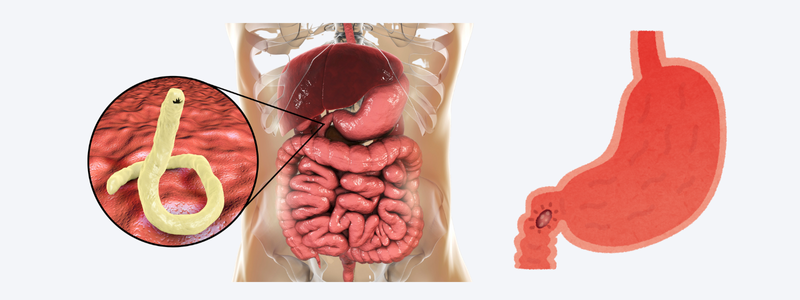
Disorders of the Stomach and Duodenum
The stomach and duodenum (the first part of the small intestine) are crucial components of the digestive system. They are responsible for breaking down food and initiating nutrient absorption. Several conditions can affect these organs, leading to pain, discomfort, bleeding, or nutritional deficiencies.
We offer expert diagnosis and advanced treatment for a wide range of stomach and duodenal disorders, including:
1. Peptic Ulcer Disease (PUD)
Peptic ulcers are open sores that develop in the lining of the stomach or the duodenum due to acid erosion. They are often caused by Helicobacter pylori infection or prolonged NSAID use.
Symptoms may include:
- Burning stomach pain
- Bloating and nausea
- Vomiting blood or black stools in severe cases
Treatment options:
- Antibiotics to treat H. pylori
- Proton pump inhibitors (PPIs) to reduce acid
- Lifestyle and dietary changes
- Endoscopic management for bleeding ulcers
2. Gastritis
Gastritis refers to inflammation of the stomach lining, which can be acute or chronic. Causes include infections, alcohol, stress, medications, or autoimmune disorders.
Symptoms:
- Upper abdominal pain
- Indigestion
- Loss of appetite
- Vomiting
Treatment involves:
- Acid suppression therapy
- Eradication of H. pylori
- Avoidance of irritants (alcohol, NSAIDs)
- Nutritional support
3. Gastroparesis
Gastroparesis is a condition in which the stomach empties food into the small intestine too slowly. It's commonly associated with diabetes or post-surgical complications.
Symptoms include:
- Early satiety
- Nausea and vomiting
- Bloating
- Poor blood sugar control in diabetics
Management strategies:
- Dietary modifications (small, frequent meals)
- Prokinetic medications
- Nutritional supplementation
- Gastric electrical stimulation in severe cases
4. Gastric Cancer
Gastric (stomach) cancer often develops silently and may present late. Risk factors include chronic gastritis, H.pylori, smoking, and family history.
Warning signs:
- Persistent stomach pain
- Unexplained weight loss
- Vomiting blood or passing black stools
- Difficulty swallowing
Treatment options:
- Endoscopic resection for early-stage cancers
- Surgery (gastrectomy)
- Chemotherapy and/or radiation
- Palliative care in advanced stages
5. Celiac Disease
An autoimmune disorder where ingestion of gluten (a protein found in wheat, barley, and rye) damages the small intestine lining, affecting nutrient absorption.
Symptoms:
- Chronic diarrhea or constipation
- Fatigue
- Weight loss
- Iron-deficiency anemia
Diagnosis and treatment:
- Blood tests (tTG antibodies)
- Duodenal biopsy via endoscopy
- Lifelong strict gluten-free diet
- Nutritional rehabilitation
6. Gastric Outlet Obstruction
This refers to any blockage that impairs the passage of stomach contents into the duodenum. It may be caused by ulcers, tumors, or scarring.
Clinical presentation:
- Vomiting undigested food
- Abdominal fullness after eating
- Weight loss
Treatment approaches:
- Endoscopic dilation or stenting
- Surgery to remove or bypass the obstruction
- Management of underlying cause (e.g., ulcers or malignancy)
7. Upper Gastrointestinal (GI) Bleeding
This is a potentially life-threatening condition resulting from bleeding in the esophagus, stomach, or duodenum.
Causes include:
- Bleeding peptic ulcers
- Esophageal varices
- Gastritis
- Malignancy
Symptoms
- Vomiting blood (hematemesis)
- Black, tarry stools (melena)
- Dizziness, fatigue, low blood pressure
